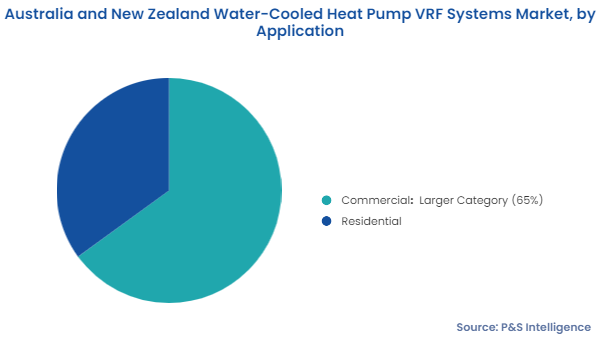Australia and New Zealand Water-Cooled Heat Pump VRF Systems Market Future Prospects
The Australian water-cooled heat pump variable refrigerant flow (VRF) systems market will generate an estimated USD 30.9 million revenue in 2024, and the market size will advance at a CAGR of 7.0% during 2024–2030, reaching USD 46.3 million by 2030.
Moreover, the market in New Zealand will generate an estimated USD 4.9 million revenue in 2024, and its size will advance at a CAGR of 5.1% during the forecast period, to reach USD 6.6 million by 2030.
The rising need for energy-efficient VRF systems, heat pumps, air conditioners, and other kinds of HVAC equipment in commercial applications is a primary driver for the market expansion. Another factor fueling the market progress is the countries’ growing number of residential and commercial spaces.
Water-cooled heat pump VRF systems are both energy-efficient and cost-effective to operate, and their long lifespan makes them suitable for both residential and commercial applications. The West Edge-New Lynn residential project in Auckland, New Zealand, for example, entails the construction of 2,088 dwellings. The project is expected to cost roughly USD 3 billion and be completed by 2027, which will create a significant requirement for such equipment.
Furthermore, due to the rising pollution levels, as a result of the increasing carbon emissions, and the need to create a healthy and sustainable environment, green buildings have become a big trend in Australasia. Energy efficiency, water conservation, waste reuse and recycling, natural resource consumption reduction, and environmental protection practices are all characteristics of a green building.
Because of the growing demand for green buildings, real estate businesses are concentrating on their construction. By 2050, Australia, for example, plans to develop solely certified green buildings, according to the Green Building Council of Australia (GBCA). Such initiatives have increased the need in the country for energy-efficient water-cooled heat pump VRF systems.
Moreover, the Australian government has pledged a 5% reduction in greenhouse gas emissions by 2020 and a 26–28% decrease by 2030. It intends to meet these goals by constructing net-zero energy buildings (NZEBs), which utilize only as much energy as renewable resources on site can produce.




